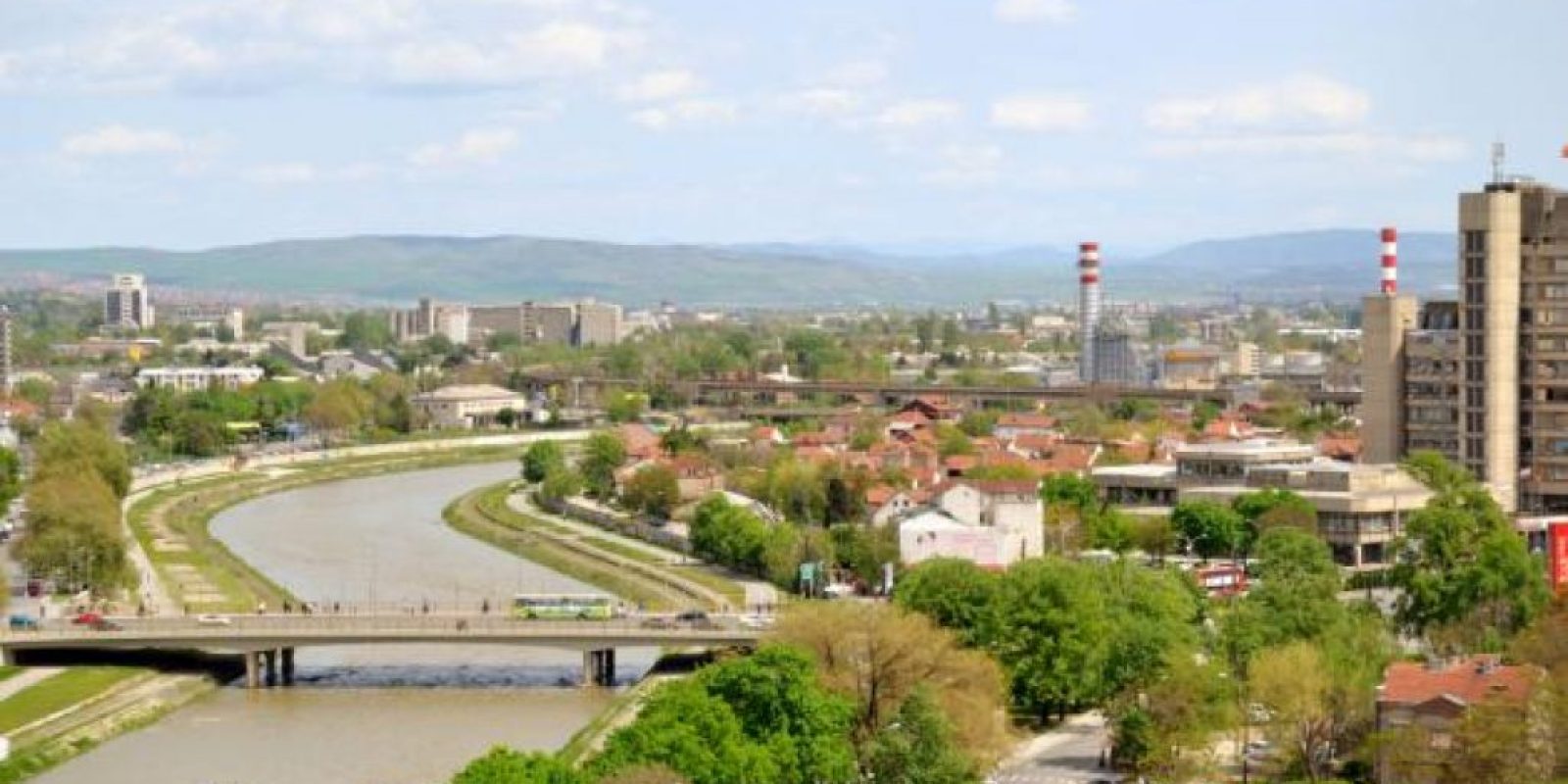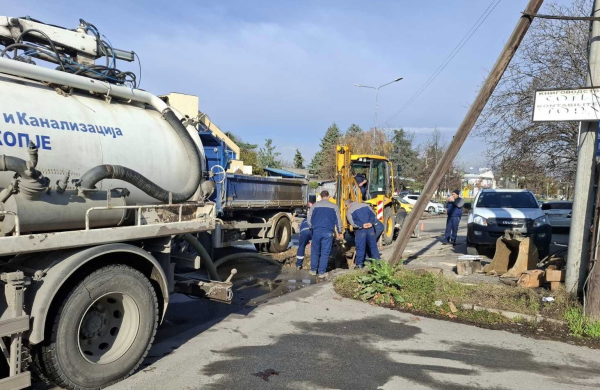Although a small country, with population of slightly over two million, Macedonia still fails to offer equal chances for work to all citizens. Citizens are facing variable economic conditions, depending solely on their place of residence. In the case of Macedonia, an old maxim from former Yugoslavia – “further south, greater despondency” – is not valid. Economically the most depressing, and therefore the region with the least job opportunities in Macedonia is the East. On the contrary, as it might have been expected, the capital is the most progressive region, with the situation in the South and the West behind it. Below is the rank list of all eight regions in the country, developed on the basis of economic criteria.
-
Skopje region
Skopje, comprised of the capital and its surrounding, is at the top of the rank list according to economic conditions and chances of decent earning. This region is the leader under 5 from total of 8 groups of criteria used to develop this ranking. While the employment rate in Skopje (39.1%) falls within the national average (40.6%), the average net salary (24,698 MKD) is – by far – the highest in the country compared to the other seven regions. Here, it is important to note that, for research purposes, all grouped and summarized data were processed on per capita basis, in order to obtain the actual image about economic conditions and job opportunities for citizens in individual regions. For example, although on the account of its incomparably high number of citizens Skopje is not the best-ranked region in terms of the total number of active and start-up businesses, it could take pride in the lowest number of closed businesses compared against its population number. Dynamism of this region is best represented by the fact that Skopje is also the leader in terms of the number of constructed housing units and in terms of issued construction permits. Moreover, Skopje is the region with the highest share in production of goods and services in the country, while asset investments among businesses in this region are twice as higher compared to all other regions. Although, under different rank list according to healthy environment it might be considered as negative indicator, in this case, the quantity of municipal waste created in Skopje, which is the highest among all regions, is assessed as indicator of dynamic life. Finally, Skopje has the highest number of pupils in primary and secondary education as share of the total population. All these factors make Skopje and its surrounding the most economically advantageous region in the country.
-
Southeast region
Second-ranked in terms of economic conditions and job opportunities is the Southeast region which, in addition to Strumica as the biggest town, also includes Radovis and Gevgelija. This region is the leader under 2 from 8 groups of criteria: number of households with Internet access and, more importantly, the employment rate. On one hand, the Southeast region has the highest employment rate (56.8%), but on the other hand, it also has the lowest unemployment rate (18.8%). That makes this region the most attractive in terms of employment. However, job seekers should not expect particularly high salaries, as the level of net salaries in this region is the third lowest in the country. This region is second-ranked according to its share in production of goods and services (GDP) per capita, in spite of its poor rank according to asset investments. All in all, the Southeast region emerged on the second position according to its economic conditions.
-
Polog region
The Polog region, with Tetovo and Gostivar being the biggest towns and settlements, is ranked third on this list, with similar number of points for all criteria with the second-ranked region, i.e. Southeast. Polog has one first and one last position under all 8 groups of criteria, as well as two second positions. It has the best rank in terms of the total number of active and start-up businesses per capita, and the lowest number of closed businesses per capita. On the contrary, this region has the lowest contribution share in GDP at national level. Criteria that elevated this region to the third position on this list include the level of net salaries. In addition to Skopje, Polog is the only region beyond the capital where the average net salary is higher than 20,000 MKD and amounts to 20,256 MKD. This region is also the leader in terms of issued construction permits.
-
Pelagonija region
Although on equal footing with the Polog region, Pelagonija holds the fourth position on this list, with Bitola and Prilep as the biggest towns on its territory. This region has several high positions and one bottom position under all 8 groups of criteria. Nevertheless, it seems that this region ranks well according to several key criteria, such as: employment rate, unemployment rate, and average net salary. Pelagonija has the second highest employment rate of 50.1% (and is the second region, after the Southeast, with employment rate higher than 50%, whereas all other regions have employment rates below 50%). Furthermore, the region has the third lowest unemployment rate of 22.2%, while the average net salary is slightly below 20,000 MKD and amounts to 19,804 MKD. On the other hand, Pelagonija is among regions with the lowest numbers in terms of newly constructed housing units per capita and in terms of issued construction permits per capita.
-
Southwest region
According to the total number of points, although not exactly in the middle, the Southwest region completes the first half of regions raked according to economic conditions. More specifically, under almost all 8 groups of criteria this region is ranked in the middle: number of active, start-up and closed businesses per capita; number of newly constructed housing units; and number of issued construction permits. Moreover, this region has middle rank in terms of the level of net salaries paid (19,329 MKD), although the amount thereof is below the national average (21,145 MKD). Both, employment (35.6%) and unemployment (36.7%) rates are worse than the national average. On the contrary, the region does not rank poorly according to asset investments, municipal waste created (in economic, not in environmental terms), Internet access and number of pupils as share of the total population.
-
Vardar region
The Vardar region leads the last, lowest-ranked group comprised of three regions in the country according to economic conditions and job opportunities. This region shows slightly better performance compared to the next, penultimate region on this list – the East, although they have almost identical number of points. With Veles, Negotino and Kavadarci as the biggest towns, the Vardar region has undeniably the worst ranks under 3 important criteria: number of active, start-up and closed businesses per capita. Passivity of this region is best represented by its poor ranks in terms of newly constructed housing units and issued construction permits. The average net salary paid in this region amounts to only 16,723 MKD and accounts for 79% of the national average.
-
East region
Second to last on this list is the East region, with Stip, Kocani and Delcevo being the biggest towns on its territory. This region has similar number of points with the Vardar region, but is ranked lower on the account of last positions under several criteria. However, it does not rank poorly in terms of the number of active and start-up businesses, as well as the number of issued construction permits per capita. On the contrary, the average net salary in the amount of 15,342 MKD is undeniably the lowest in the entire country (the average salary paid in Skopje region is higher by more than 60%). In spite of low salaries, this region is ranked rather high, i.e. third according to the employment rate (49.1%), and second according to the lowest unemployment rate (19.5%). In contrast, the East region has the lowest number of pupils in primary and secondary education as share of the total population and has the second lowest share of households with Internet access.
-
Northeast region
The furthest, Northeast region in the country is absolutely the most depressing region according to economic conditions and job opportunities. This region has the highest number of last and second to last positions under all 8 groups of criteria. The Northeast region, which includes the second biggest town in the country – Kumanovo, is the ultimate record-holder under 2 key criteria, i.e. it has the single employment rate in the range below 30%, and the single unemployment rate in the range above 40%. More precisely, employment accounts for low 29.9% (for comparison, the national average stands at 40.6%) and unemployment accounts for 44.9% (the national average is 29%). Even the average net salary in the amount of 16,398 MKD is the second lowest salary paid in the country. Moreover, this region has low contribution share to GDP, newly constructed housing units and number of issued construction permits per capita. Undeniably the lowest performance was observed in terms of asset investments and Internet access. In comparison, this region is twice as worse than the leader, i.e. Skopje region, according to the total number of points allocated under all criteria.









